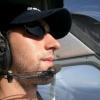
Sign in to follow this
Followers
0

What flap setting to choose for takeoff?
By
victorlima01, in PMDG General Forum


By
victorlima01, in PMDG General Forum